18+ Sample B2B Marketing Strategy
-
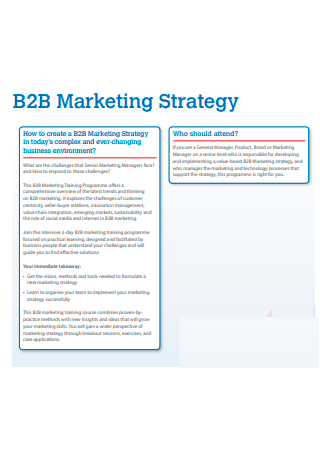
B2B Marketing Strategy Template
download now -
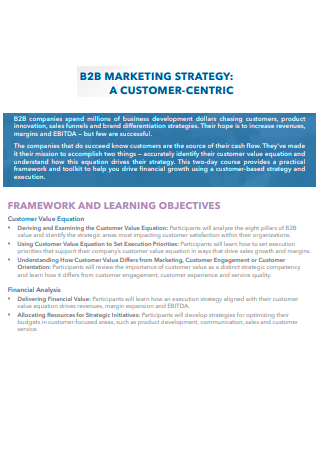
Basic B2B Marketing Strategy
download now -

B2B Marketing Strategy Example
download now -
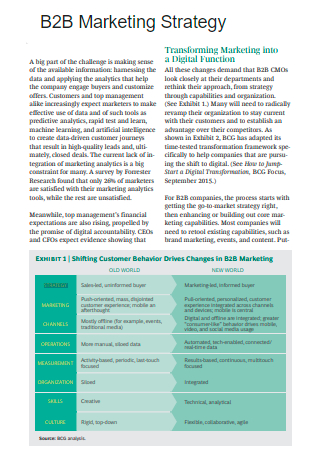
Printable B2B Marketing Strategy
download now -
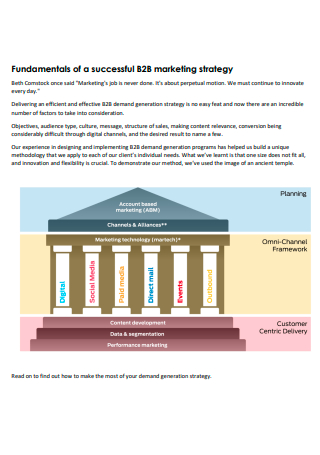
Fundamentals of B2B Marketing Strategy
download now -
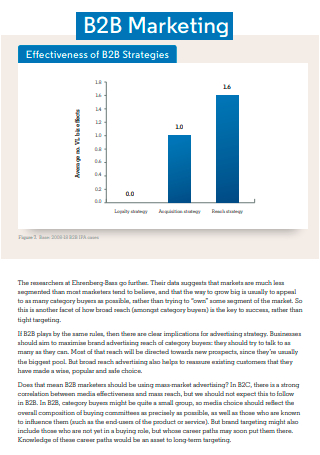
Effectiveness of B2B Marketing Strategies
download now -
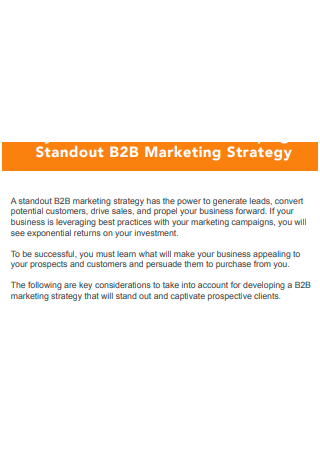
Standout B2B Marketing Strategy
download now -
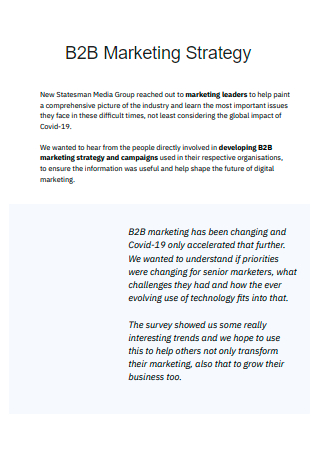
B2B Marketing Strategy in PDF
download now -
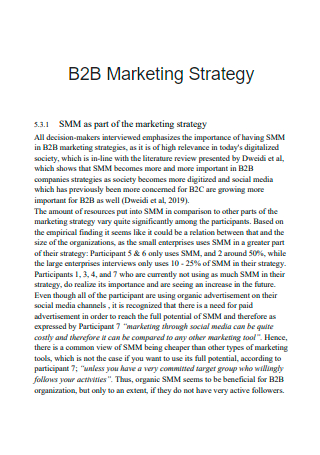
Standard B2B Marketing Strategy
download now -

B2B Intent Data Marketing Strategy
download now -
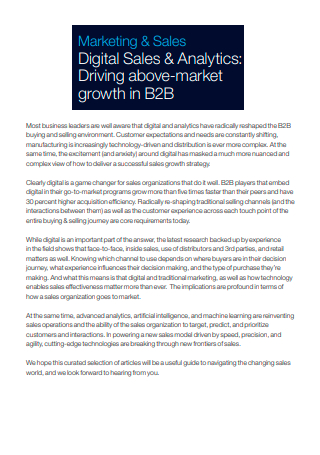
B2B Marketing and Sales Strategy
download now -

B2B Digital Communication Marketing Strategy
download now -
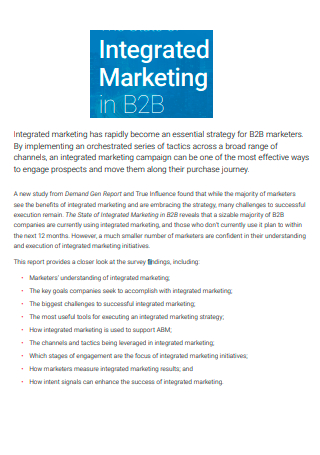
Integrated B2B Marketing Strategy
download now -
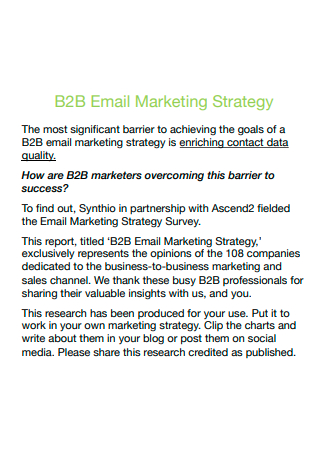
B2B Email Marketing Strategy
download now -
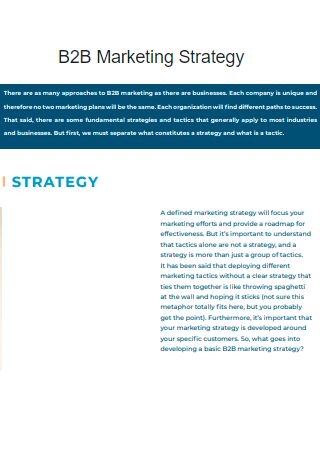
Formal B2B Marketing Strategy
download now -
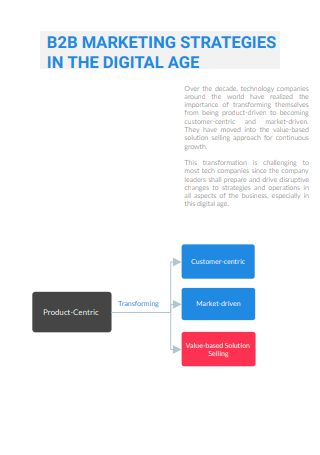
B2B Marketing Strategies in Digital Age
download now -
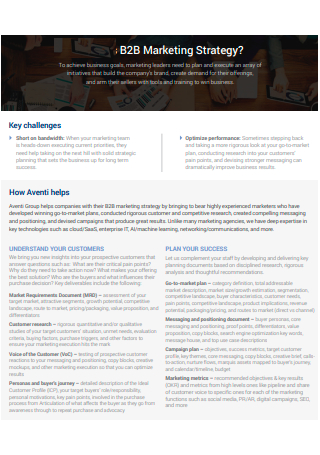
Simple B2B Marketing Strategy
download now -
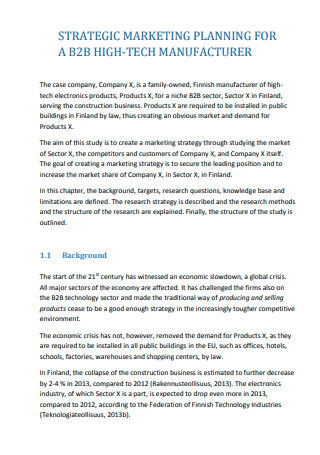
B2B Marketing Strategic Planning
download now -
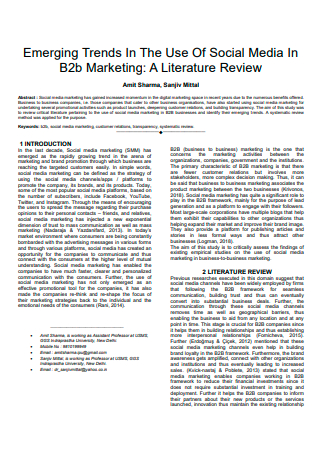
B2B Marketing Strategy Format
download now
FREE B2B Marketing Strategy s to Download
18+ Sample B2B Marketing Strategy
What Is a B2B Marketing Strategy?
Types of B2B Marketing Channels
How To Write an Effective B2B Marketing Strategy
FAQs
What are the 4 types of marketing strategies?
What are examples of B2B marketing?
Is Amazon a B2B or B2C company?
What Is a B2B Marketing Strategy?
The B2B marketing strategy is a classification of a marketing strategy that organizations use to raise brand awareness of products and services towards potential buyer businesses. The process involves identifying different tools and channels that marketers can use to transfer products and services, including the necessary resources for the relationship. The purpose of B2B marketing is to familiarize other businesses with a brand name. That includes product or service values with the chance to convert them into partners or customers. B2B marketing strategies focus on the customer journey, starting from product and service research plan to solve a problem of the company, identifying possible candidate solutions for purchase, customer evaluations, and settling for an organization set on a purchase.
According to an article published on the Content Marketing Institute website in October 2019 entitled 2020 B2B Content Marketing: What the Successful Do, 58 percent of participating companies or B2B marketers say that they went through with achieving their respective goals in contrast with 68 percent of respondents during 2020. Meanwhile, 86 percent of B2B companies mention success in creating brand awareness towards their prospects.
Types of B2B Marketing Channels
As far as B2B marketing strategies are concerned, company marketers will find various marketing channels to reach their target companies. There are particular advantages to using one medium over another or using different channels simultaneously. Marketing strategists must know their target consumers to know which ones to use to reach out in the best way possible. Below are examples of the different types of B2B marketing channels that are present in various organizations.
How To Write an Effective B2B Marketing Strategy
The different marketing channels are relevant to make various strategies work for a company. Some companies select one over the other or use multiple platforms to raise brand awareness. No matter the channel an organization chooses to use, it is necessary to build an effective B2B marketing strategy surrounding the method that marketers plan to use. Below is a helpful guide in building comprehensive B2B marketing strategies.
-
Step 1: Segment the Market and Focus On a Target Segment
Through focusing on market segments, it is easier to personalize marketing efforts according to the name, role, and industry of the target company, including the needs and challenges of the group in a segment. To classify the segments, an organization must identify potential buyers of a product or service and the problems or needs they want to address. There are different criteria when segmenting markets, including competition levels, market breadth, lifetime value, segment growth, and continuity, which are just a few. Take note that all market segments are equal. Some yield a higher return on investments (ROI) than others but demand more resources. Market segmentation also has different needs, making them unique on their own. Marketers must create various marketing proposals to cater to a specific market segment.
-
Step 2: Create an Ideal Customer Profile for Every Market Segment the Company Approaches
There is a significant difference between a simple customer persona and an ideal Customer Profile (ICP). The main difference is the focus of ICP, which is attracting high-quality leads that are similar to the key customers, instead of making a general profile based on similarities. Using the ICP approach, companies can personalize the marketing materials they utilize, including sales pages, Sales Proposals, and marketing ads. Organizations can also select the most effective lead generation strategies, including choosing the most appropriate qualification criteria for evaluating the effectiveness of marketing campaigns.
-
Step 3: Engage in Competitor Analysis
It is advantageous to work on the company foundation before implementing marketing strategies. To identify which marketing channels work best for your organization, focus on surveying core customers and spying at top competitors. Look for websites that calculate for similar companies that offer similar services or products and understand the origins of their organic traffic. Having this information gives an idea of the marketing channels to utilize to gain more prospective customers. Another advantage of engaging in a competitor analysis is learning about various sales processes, possible strengths and weaknesses, unique selling propositions (USP), and Policy And Procedures. The elements a company analyzes depend on their respective industries.
-
Step 4: Develop Unique Selling Propositions (USP) for the Target Market
When developing USP, companies must reach out to their core customers, asking them their favorite detail about a service or product. From the created list, select the ten most relevant answers. Now, compare the information with the features that competitors possess and select the criteria that the company ranks higher. From here, create a USP that highlights these factors, including their impact, feature, target market, and needs.
-
Step 5: Take the Prospects Through the Buyer Journey
To attract the attention of your prospective customers, companies must have an idea of the process their products address buyer concerns and prospects’ awareness of it. Answer specific questions that buyers need solutions to for the company to help them consider various methods during the consideration stage. For the decision-making process, qualify prospects by selecting the most appropriate and accurate answers. Lead generation comes after, and during this stage, the prospective client must already be aware of the benefits they get from purchasing the product or service. Aside from the marketing funnel, the buyer journey includes sales funnels, post-sales funnels, and referral funnels that focus on recommendations and Case Studies.
-
Step 6: Classify the Goals, Channels, and Resources that Contribute to the B2B Marketing Strategy
Set SMART Goals the company wishes to achieve. Establish the market segments that the marketing team must focus on, including what to tell them. Set specific milestones to measure success. Indicate the stages the company aims to achieve and the relevant steps to take to accomplish the marketing objectives. Indicate the resources needed to accomplish the marketing plan with the significance of the ROI the company sets to achieve. Start the Marketing Action Plan with the highest one until you exhaust the resources to the least. Be careful not to fluctuate budget scales as costs are proportional to rapid changes. Select the possible marketing channels after identifying which medium the ideal customer personas are active and the tools and resources with the highest success rate. There is a possibility that companies engaging in B2B marketing utilize all of these at one point. As mentioned, various marketing channels yield different results. The key is to identify which channels work best and will be most effective to attract audiences.
FAQs
What are the 4 types of marketing strategies?
The four types of marketing strategies include market penetration strategies, market development strategies, product development strategies, and diversification strategies.
What are examples of B2B marketing?
B2B marketing examples include automobile manufacturing industries. These manufacturing companies produce several pieces and parts of a car, including tires, batteries, and other electronics that are essential to forming the final product. Another example of B2B marketing is a commercial construction company attempting to sell its services to a business magnate as an independent contractor to build one of the many satellite stores or offices.
Is Amazon a B2B or B2C company?
Amazon serves as a B2B (business-to-business) and B2C (business-to-consumer) company. The B2B channels of Amazon work well with many industries, including retail, construction, and information technology, ranging from small to medium, and even large businesses. Amazon is well known for being a B2C business as it sells a wide range of products for everyday use.
B2B marketing strategies are prevalent in many industries that share similarities. However, without setting goals, viable marketing channels, and helpful resources, B2B marketing proves challenging to accomplish. B2B marketing involves countless amounts of communication and research with current customers and potential clients. As such, marketers must work together to develop substantial and accurate information to produce a B2B marketing strategy that targets the needs and problems of its core customers. To start your B2B marketing journey, download the B2B marketing strategy sample available to increase the company’s brand reach.
